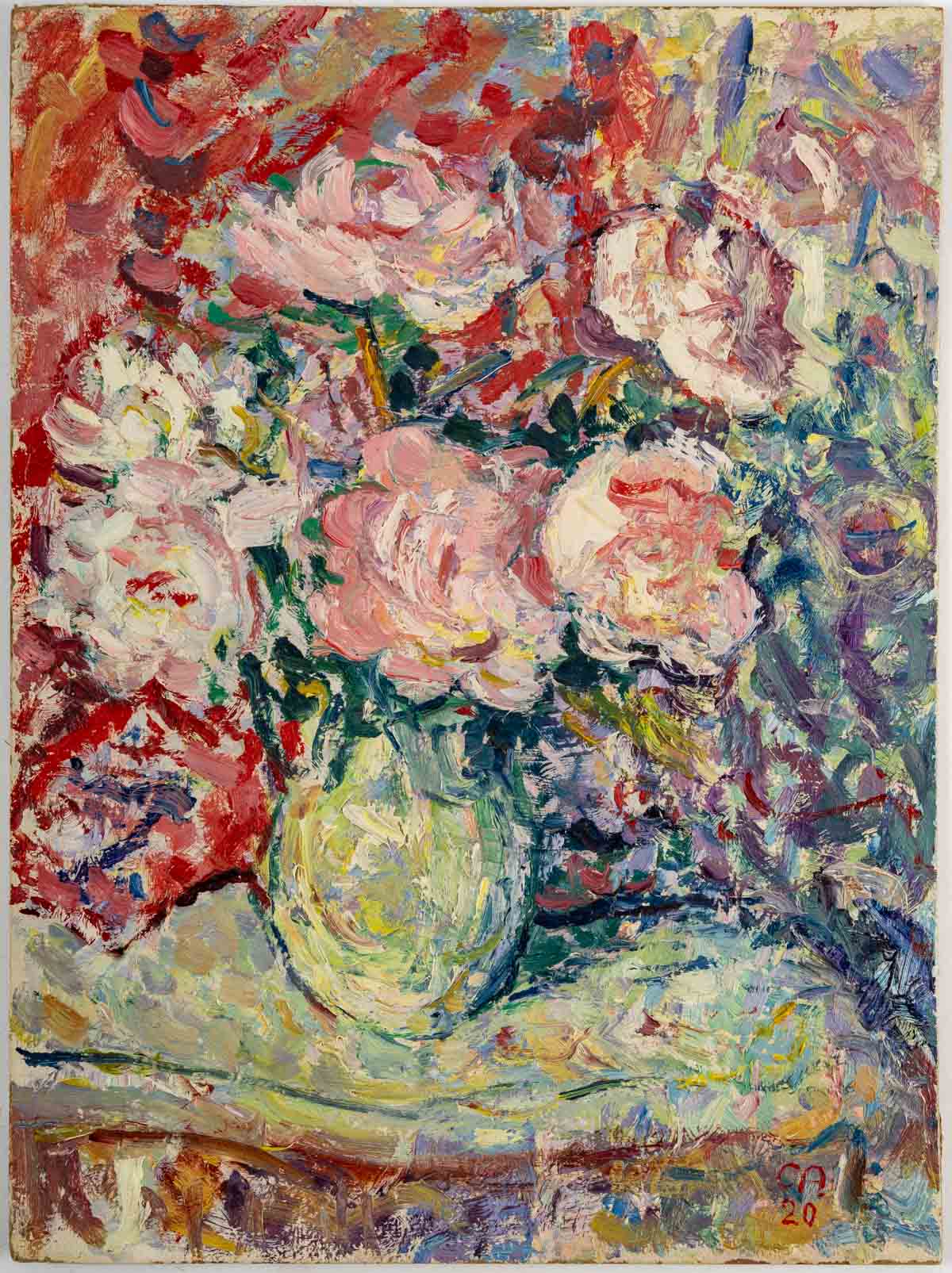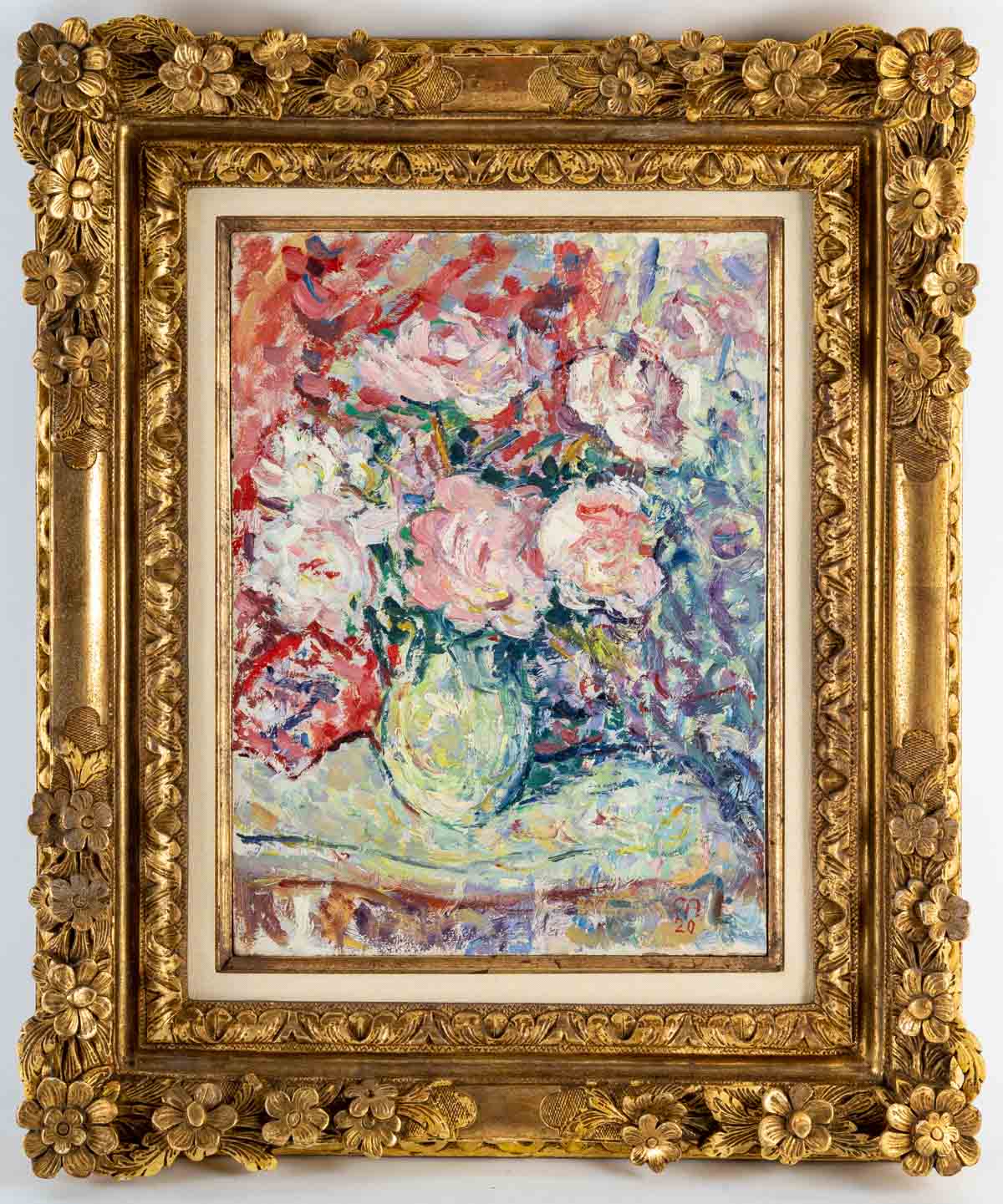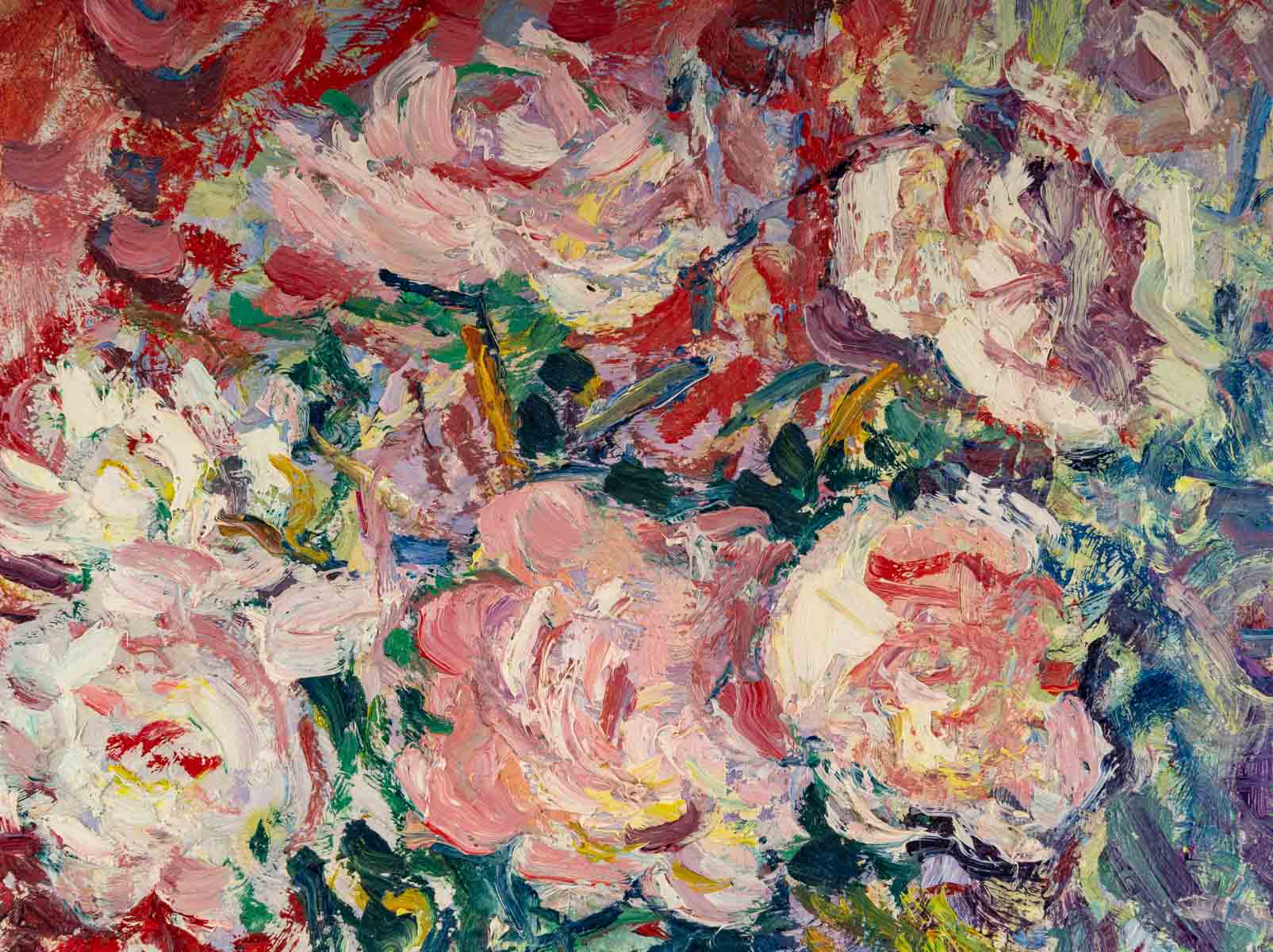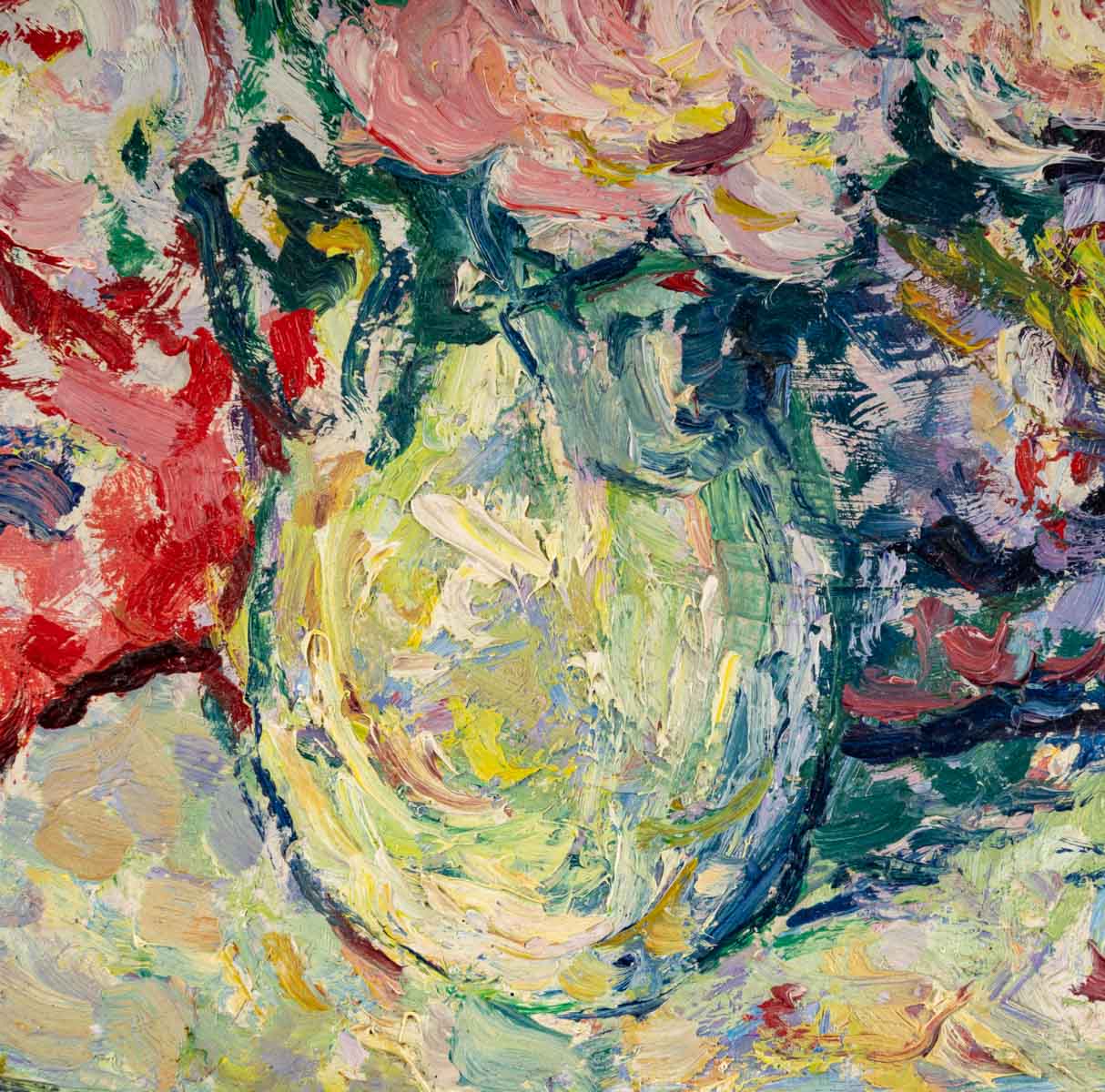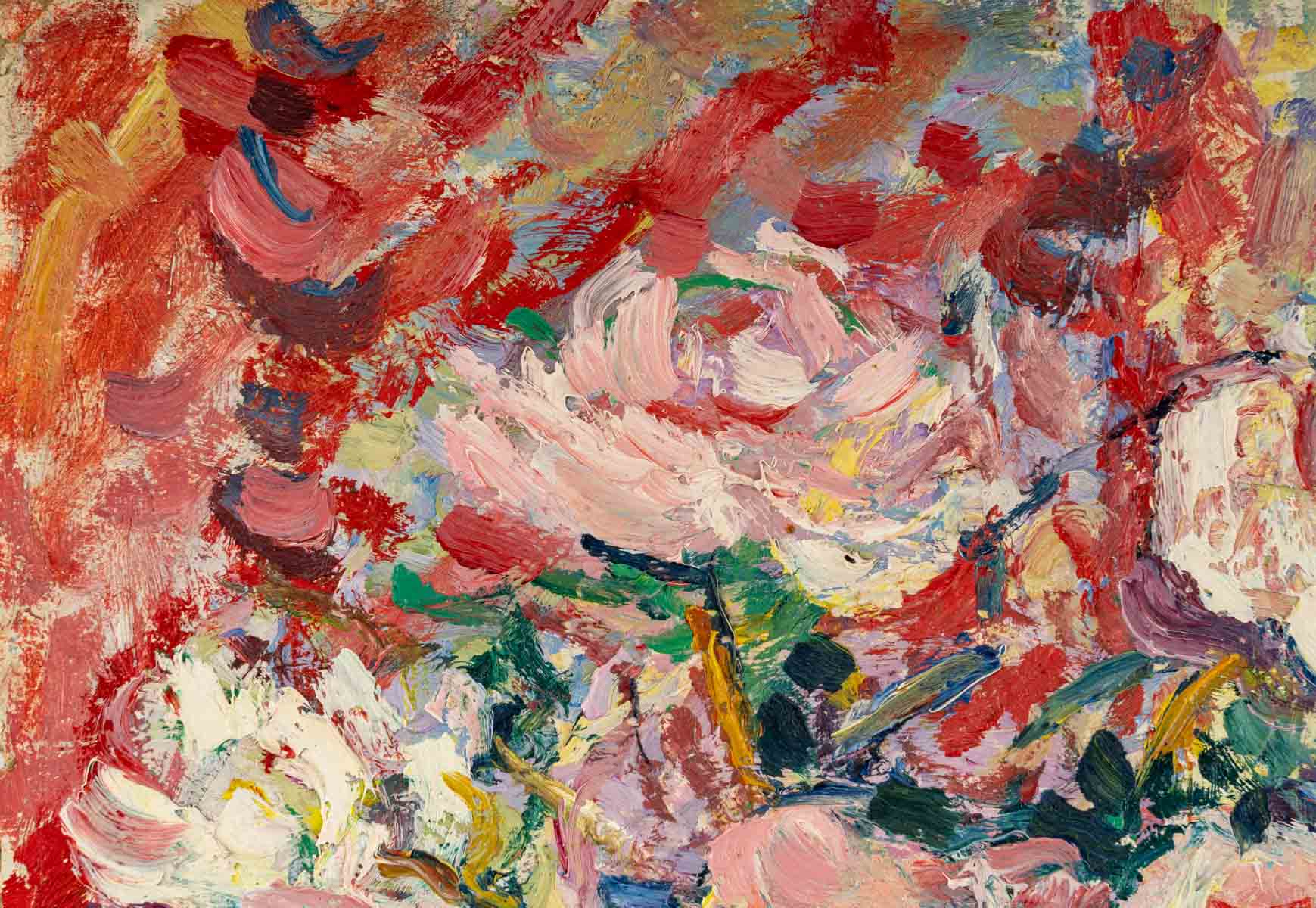Cuno AMIET (1868 – 1961)
An explosive, colorful bouquet of flowers, dated 1920 by the swiss painter Cuno Amiet.
Oil on cardboard
Monogrammed and signed lower right
Dimensions: 35 x 26 cm
With frame: 53.5 x 45 cm
Price upon request
An explosion of color, a lively touch, a composition on the road to abstraction
Peonies, roses? A twirling, explosive bouquet full of colors, cheerful and soft, pleasant to look at and inviting us to contemplate. These flowers seem to come to life in a rush, blending together in a sort of inextricable whirlpool, and it’s hard to distinguish the variety on display; the drawing is clear enough to define the edges of the vase and the table on which they are displayed.
Like the motif, the décor is flowery. In the background, the strokes intermingle in a gradation of colors which goes from pink in the top left diagonal, through light green at the bottom, to purplish tones in the bottom left. Here is the audacity of this composition, which takes the risk of blurring perspective but retains the precise transcription of the subject represented.
A talented colorist and the study of space and light
Under the pretext of a painting of a flowers bouquet , Cuno Amiet shows the extent of his skills and his ability to sublimate colors in an infinitely vivid and varied palette. He plays with gradations on the canvas, moving very distinctly from cooler colors (blue, green, violet) to warmer tones (red, orange, yellow). The diagonal line running from the bottom left corner to the top right corner clearly marks this separation. The flowers are painted in pinks and oranges pastel.
The daylight that crosses the scene is a criteria that can explain this split and give coherence to this painting. As a result, the right-hand side of the painting seems to be plunged in the shadow . The antique piece of furniture on which the vase with the flowers laid is the anchor to reality regarding the outside character we imagine painting.
Biography
Cuno Amiet showed a talent for painting as early as middle school. He received his first artistic training from Frank Buchser in Feldbrunnen (canton of Solothurn), who occasionally gave him painting lessons. In 1886, he left to study at the Munich Academy, where he met Giovanni Giacometti. In 1888, he travelled to Paris with the latter. The two friends enroll at the Julian Academy. Inspired by the life of Paul Gauguin, Cuno Amiet spent a year in Pont-Aven in 1892, where he met the master’s disciples and also discovered the works of Vincent van Gogh. He also met Armand Seguin, who introduced him to engraving. During his stay in Brittany, he laid the foundations of his art as a colorist.
In 1893, Cuno Amiet returned to Switzerland. In 1897, he made the acquaintance of Ferdinand Hodler, with whom he was one of the most illustrious representatives of the Symbolist movement in Switzerland. The following year, he married the daughter of a wealthy innkeeper, Anna Luder. In 1898, he moved with her to a house in Oschwand (Canton Bern). The Bernese village of Oschwand became a center for artistic creation and vacationing in 1908.
He maintained close contact with foreign countries, participating with Ferdinand Hodler in the Vienna Secession in 1904. He exhibited in Dresden in May 1905. Here he met the young Expressionist painters who founded the avant-garde art group Die Brücke that same year. In September 1906, he was formally invited to join Die Brücke, which he accepted. This has enabled Cuno Amiet to take part in group exhibitions abroad.
When the Glass Palace in Munich burned down in 1931, Cuno Amiet lost part of his work. From the 1920s until his death in 1961, at a very old age in Oschwand, Amiet devoted himself primarily to joyful, idyllic landscapes.
In addition to easel works, Amiet also executed murals and engravings. After Ferdinand Hodler, his mastery of color gave new impetus to Swiss painting.
Cuno Amiet was a member of the Federal Fine Arts Commission (1911-1915 and 1931-1932) and the Moderner Bund (1912). In 1919, he was awarded an honorary doctorate by the University of Berne. He was also a member of the commission of the Gottfried Keller Foundation (1934-1948) and the commission of the Bern Art Museum (1935-1948).
Bibliography
– Cuno Amiet from Pont-Aven to “Die Brücke” – Musée Rath Genève- Skira Seuil
– Édouard-Joseph, Dictionnaire biographique des artistescontemporains. Tome 1, A-E, Art & Édition, 1930, p. 35-36
-Cuno Amiet” in Paul Müller and Sylvie Patry (eds.), Modernités suisses, 1890-1914, catalog of the exhibition at the Musée d’Orsay, Paris, March 1 – June 27, 2021, Flammarion, Paris, March 2021, p. 153-169
Museums
– Fine Arts Museum San Francisco
– Cleveland Museum Ohio
– Dallas
– Los Angeles
– Paris, Musée d’Orsay
– Museums of Bern, Basel, Lucerne, Solothurn, Lugano
– Florence Museum[
– Brest, Fine Arts Museum
– Lugano, Museo Cantonale d’Arte: Cuno Amiet,
Self-portrait, 1922,
Source
https://fr.wikipedia.org/wiki/Cuno_Amiet

